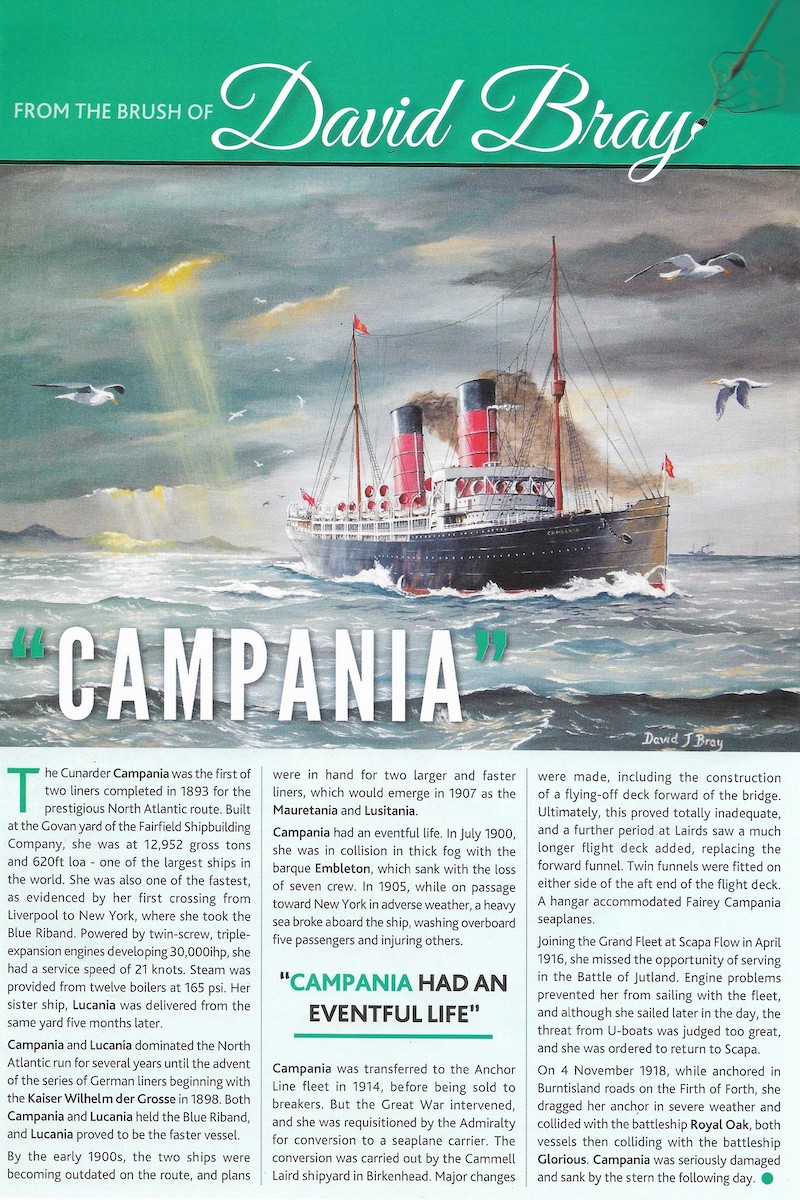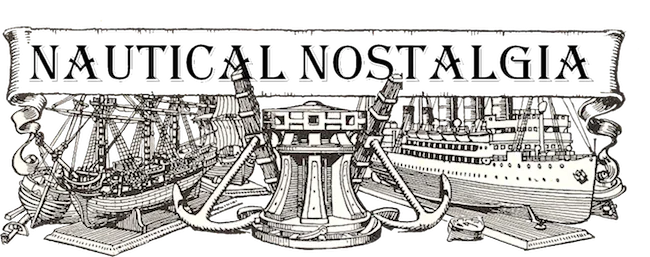From the brush of David Bray


The Cunarder “Campania” was the first of two liners completed in 1893 for the prestigious North Atlantic route. Built at the Govan yard of the Fairfield Shipbuilding Company, she was at 12,952 gross tons, and 620ft loa. one of the largest ships in the world. She was also one of the fastest, as evidenced by her first crossing from Liverpool to New York, in which she took the Blue Riband. Powered by twin-screw, triple-expansion engines developing 30,000ihp she had a service speed of 21 knots. Steam was provided from twelve boilers at 165 psi. Her sister ship, “Lucania” was delivered from the same yard five months later.
“Campania” and “Lucania” dominated the North Atlantic run for several years until the advent of the series of German liners beginning with the “Kaiser Wilhelm der Grosse” in 1898. Both “Campania” and “Lucania” held the Blue Riband, and “Lucania” proved to be the faster vessel.
By the early 1900s, the two ships were becoming outdated on the route, and plans were in hand for two larger and faster liners, which would emerge in 1907 as the “Mauretania” and “Lusitania”.
“Campania” had an eventful life. In July 1900 she was in collision in thick fog with the barque “Embleton”, which sank with the loss of seven crew. In 1905 while on passage toward New York in adverse weather, a heavy sea broke aboard the ship washing overboard five passengers, injuring others.
“Campania” was transferred to the Anchor Line fleet in 1914, before being sold to breakers. But the Great War intervened and she was requisitioned by the Admiralty for conversion to a seaplane carrier. The conversion was carried out by the Cammell Laird shipyard in Birkenhead. Major changes were made, including the construction of a flying-off deck forward of the bridge. Ultimately, this proved totally inadequate, and a further period at Lairds saw a much longer flight deck added, replacing the forward funnel. Twin funnels were fitted, either side of the aft end of the flight deck. A hangar accommodated Fairey Campania seaplanes.
Joining the Grand Fleet at Scapa Flow in April 1916, she missed the opportunity of serving in the Battle of Jutland. Engine problems prevented her sailing with the fleet, and although she sailed later in the day, the threat from U-boats was judged to be too great, and she was ordered to return to Scapa.
On 4th November 1918, while anchored in Burntisland roads on the Firth of Forth, she dragged her anchor in severe weather, and collided with the battleship “Royal Oak”, both vessels then colliding with the battleship “Glorious”. “Campania” was seriously damaged and sank by the stern the following day.
This article, and others, follow a series which Sea Breezes magazine is publishing, featuring David’s paintings, and the stories behind them.
